1. Waiting to be seated, even in an empty restaurant
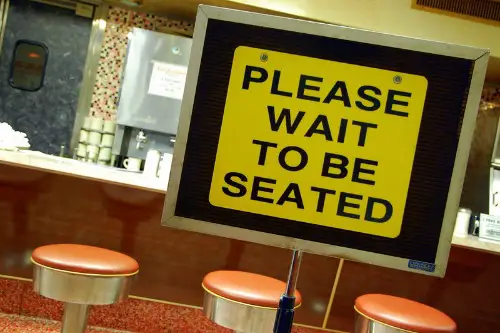
If you walk into a chain restaurant, you’ll usually find a host stand near the entrance. The unspoken rule is that you don’t seat yourself, even if there are plenty of open tables. The host’s job is to manage the flow, balance server workloads, and avoid overloading one section. It’s a subtle sign of organization behind the scenes.
In more casual diners or cafés, seating yourself is the default. But chains keep the ritual to maintain service efficiency. Guests generally accept it without complaint, even if they feel slightly silly waiting in an empty room. It’s just how the system works there.
2. The automatic “Hi, I’m your server!” introduction

In most American chain restaurants, it’s standard for your server to greet you by name almost as soon as you sit down. This is meant to make the dining experience feel more personal, even though the relationship is temporary. The practice helps build rapport quickly so you’re more comfortable ordering and potentially tipping well. You’re unlikely to see the same level of upfront name exchange in many other countries’ casual dining spots.
It’s also a kind of unwritten rule that you, the guest, don’t have to share your own name back. The interaction is entirely one-way, which makes it a bit of a cultural quirk. The idea is about familiarity without commitment—servers might never see you again. But for that meal, there’s an expectation of warm, first-name service.
3. The “free water” that just keeps coming

Chain restaurants in the U.S. often serve ice water for free without you asking. Not only that, but they’ll refill it constantly, sometimes without interrupting your conversation. This isn’t a global norm—many countries only offer bottled water, sometimes for a fee. In American casual dining, though, it’s seen as part of the hospitality package.
The same goes for soft drinks in many chains—refills are usually unlimited unless stated otherwise. This creates a kind of “bottomless” beverage culture unique to these settings. It also subtly encourages you to linger longer, which can make the environment more social. And yes, they’ll still keep your water glass topped off even after dessert.
4. Leaving your coat on the back of the booth
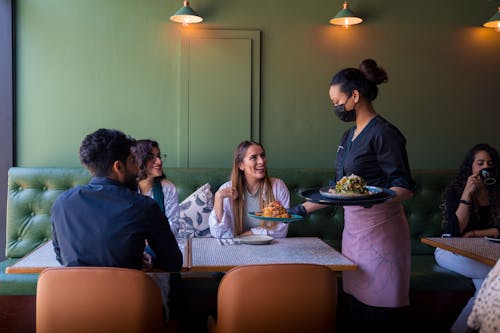
In many American chain restaurants, it’s completely normal to just drape your jacket or coat on the back of the booth or chair. There’s rarely a coat check or designated storage area. The spaces are designed to be casual enough that you don’t feel the need to tidy up before eating. It’s part of the “make yourself at home” atmosphere.
In more formal settings, this would look sloppy or inconsiderate, especially if it blocks walkways. But in chains, nobody minds—it’s seen as practical. People are expected to manage their own space without staff intervention. It’s just one more signal that you’re in a laid-back, informal environment.
5. Expecting a tip, even for basic table service

Tipping culture is deeply embedded in American chain restaurants. Even if you just order a salad and water, it’s assumed you’ll leave at least 15–20% for your server. This is because servers’ base pay in many states is much lower than the standard minimum wage. The tip is considered a core part of their income.
In other countries, tips are either much smaller or included in the bill. But in the U.S., especially in casual dining, not tipping is seen as a personal slight. It’s one of the few “must follow” norms in an otherwise relaxed setting. Failing to do so could get you labeled as rude or stingy.
6. Singing for your birthday, loudly

The chain restaurant birthday song is a rite of passage for many Americans. If you tell the staff it’s your special day, they’ll often come to your table clapping, sometimes with a dessert in hand. The songs are often quirky originals, because “Happy Birthday to You” used to be subject to copyright issues. It’s all about creating a small spectacle in the middle of dinner.
This isn’t common everywhere—many cultures keep birthday celebrations more private in restaurants. In the U.S., the norm is that you don’t just celebrate with your table, you celebrate with half the dining room watching. Staff join in without hesitation, even if it means stopping other work. It’s noisy, public, and completely part of the charm.
7. Putting giant drink straws in every beverage
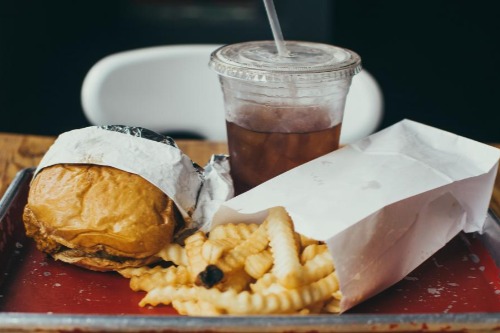
In most American chain restaurants, if you order a soda, iced tea, or even water, you’ll get a straw automatically. It’s often a large, sturdy straw that can handle big ice cubes and syrupy drinks. This was historically tied to convenience and hygiene, especially with communal ice machines. The habit has stuck around, even as some chains are switching to paper or reusable versions.
In many other places, straws are considered unnecessary unless specifically requested. But in U.S. casual dining, it’s part of the default service. It signals readiness—the drink arrives fully equipped for immediate sipping. It’s so ingrained that people sometimes feel strange drinking from the glass without one.
8. Boxed-up leftovers as a normal request
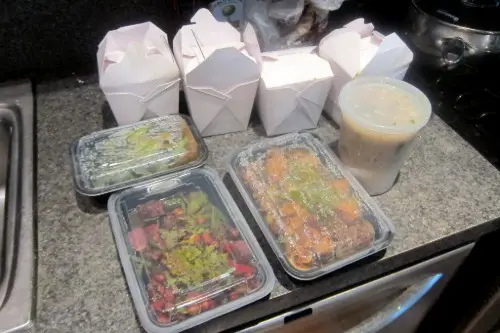
In chain restaurants across America, asking for a to-go box is totally normal. In fact, servers often offer one before you can ask. Portion sizes are big enough that leftovers are almost expected. There’s no shame in packing up half a burger for later.
In other cultures, taking leftovers home might be unusual or even frowned upon. But here, it’s framed as practical and waste-conscious. The norm is so strong that restaurants stock branded takeout containers. It’s one of the most visible signs of the “value for money” dining mentality.
9. Dessert menus that appear after you’re “done”
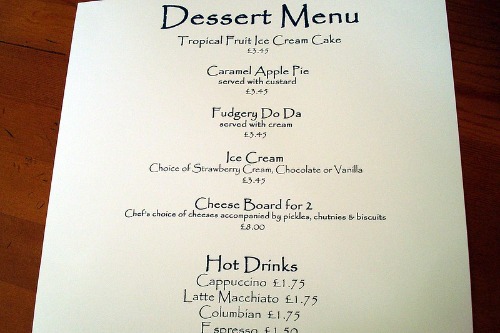
In many American chain restaurants, dessert is treated as a separate sales moment. The server will often bring a menu or verbal pitch after clearing your plates. It’s a chance to upsell, but also a social cue that the main meal is officially over. The pause creates space for you to reconsider how full you actually are.
This isn’t universal—some restaurants around the world assume you’ll order dessert upfront. In the U.S., the delayed dessert offer feels like a tradition. It also gives chains a chance to highlight seasonal or oversized options. Even if you say no, it’s part of the expected dining rhythm.
10. Sharing appetizers without asking

In chain restaurants, appetizers are often designed to be communal. Menus even label them as “shareables” or “for the table.” The portions are large, and it’s assumed that everyone will grab a mozzarella stick or potato skin without needing formal permission. This creates a casual, family-style vibe even when you’re not with family.
It’s interesting because in many fine-dining settings, sharing food without asking might be considered bad manners. But here, it’s not only acceptable—it’s expected. The marketing encourages it, too, with names like “Sampler Platter” that make sharing the default. Nobody blinks an eye when multiple hands reach for the same plate.
11. Salad dressing on the side by default
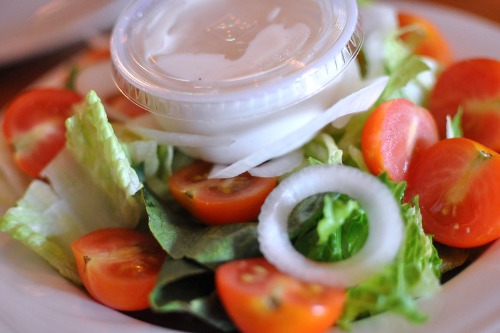
In U.S. chain restaurants, many servers automatically ask if you want salad dressing on the side. This is tied to the American preference for customizing meals and controlling portion sizes. It also lets people avoid soggy greens if they’re eating slowly. The practice caters to a mix of dietary preferences and perceived health consciousness.
Outside of the U.S., salads often come pre-dressed with little room for negotiation. But in American chains, the “on the side” option is almost a default expectation. Even if you don’t request it, many places will still serve it that way. It’s another small sign of the hyper-customized dining culture.
12. Cheerfully asking “Are you still working on that?”
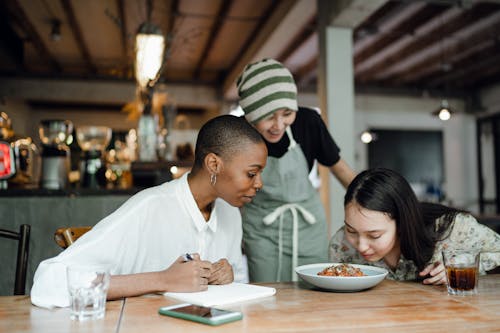
Servers in American chains have a polite code for asking if you’re done eating. “Are you still working on that?” is a softer, friendlier version of “Are you finished?” It’s meant to avoid rushing you or making you feel judged for eating slowly. The phrasing is so common that it often goes unnoticed.
In other cultures, the question might be more direct, or plates might be cleared only after everyone is finished. But in American casual dining, there’s an art to checking in without interrupting your meal. The wording feels conversational, even though it’s scripted. It’s one of those little phrases that instantly signals you’re in a chain restaurant.
This post 12 Social Norms That Only Apply Inside Chain Restaurants was first published on American Charm.


